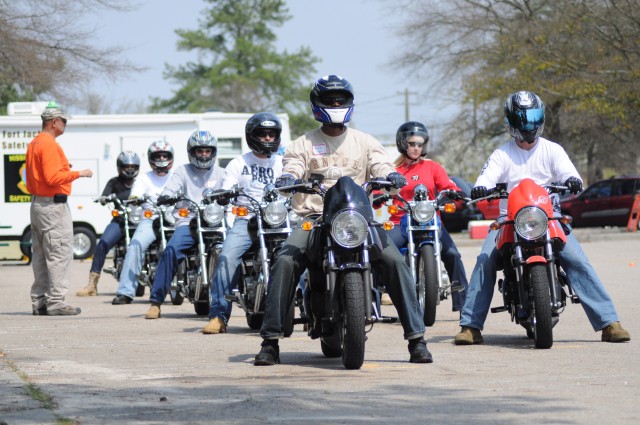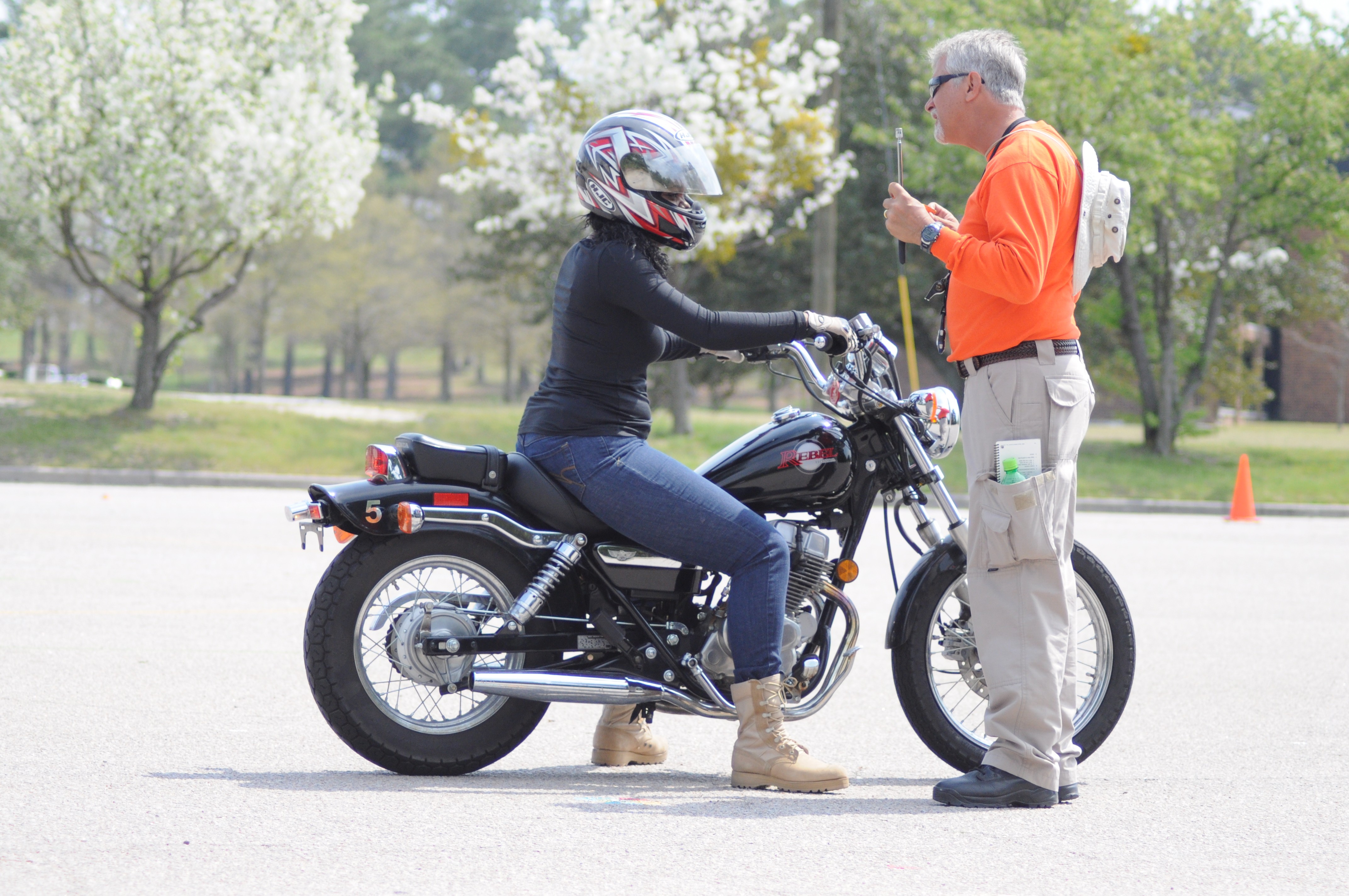FORT JACKSON, SC -- Slowly release the front brake with your right hand while simultaneously releasing the clutch with your left. Make sure your wrists are properly aligned, and then gently twist the throttle. Look out into the horizon and not down at the ground. Make a mistake and you might find yourself on the pavement with a 300-pound motorcycle on top of you.
Riding a motorcycle always seemed to me like a simple one, two, three process. Turn the bike on, gun the throttle, release the brake and go as fast as your heart desires.
I was wrong. Merely turning on the bike on is a five-step process. Fuel, ignition, neutral, engine, choke. Thirty minutes into Fort Jackson's Motorcycle Basic RiderCourse, it was clear that riding a motorcycle took much more concentration, focus and mental alertness than I originally thought.
The class, which is part of the Fort Jackson Safety Center, was taught by Rick Williams and Bruce Dinoff, who, together, have more than 85 years of riding experience. The class curriculum was created by the Motorcycle Safety Foundation.
"Stop the stupid," is the phrase Williams uses to instill the importance of such safety classes.
I have seen some of the "stupid," which includes helmet-less riders weaving through traffic at 90 mph, with the backs of their shirts flapping wildly in the wind. I have also witnessed riders exceeding speeds that those in a 4,000-pound, fully-enclosed vehicle should not exceed.
An already tragic motorcycle accident seems even more so when it involves Soldiers who have survived an Iraq or Afghanistan deployment without injury, only to die in a motorcycle accident once they come home.
In fact, it was the rising death rate of Soldiers in motorcycle accidents that resulted in an Armywide initiative requiring motorcycle safety courses. In 2000, there were eight Army motorcycle fatalities. In 2008, there were more than seven times as many, 51.
There was a mixture of experience among the nine students in my class. Several students had no experience, but there were also some who had been riding for years.
For example, Sgt. Timothy Prest, a Marine recruiter from Greenville, said he had been riding dirt bikes since he was 7, but felt there was always something new to learn. Second Lt. Michael Brown, from the 193rd Infantry Brigade, who is also an experienced rider, had to take the mandatory course in order to operate his motorcycle on post. But he said he also saw the course as an opportunity to correct some of his bad riding habits.
Much of the first day was spent reading and discussing the basics of motorcycle riding. Then the fun began. Each student took a turn on the EF-Bike Motorcycle Simulator, which combines video game-like graphics with real road feedback.
After spending time on the simulator, we hit the streets on the Honda 250 Rebels provided us. The "streets" were actually a closed course set up in a Sumter Avenue parking lot.
By the next afternoon, I began to feel more confident but my feelings of adequacy quickly ended when, over the roar of the nine motorcycles, I heard Dinoff yell at me.
"My grandmother drives faster than that ... you have got to get over 15 mph," he said. A look at the speedometer showed that the 30 mph I thought I was riding was just a mere 12 mph.
By Day Three, Williams said we had graduated to "motorcycle middle school." We had only two requirements left to earn our MSF cards - score at least an 80 percent on the written test and demonstrate proficiency in certain riding skills. We all passed, and three students even earned awards.
I was just happy that I survived.
Editor's note: Field Day is an occasional column written by Public Affairs intern Sharonda Pearson. The column will highlight the post's various activities and offerings.
Related Links:
See the video of Sharonda and her classmates practice riding






Social Sharing